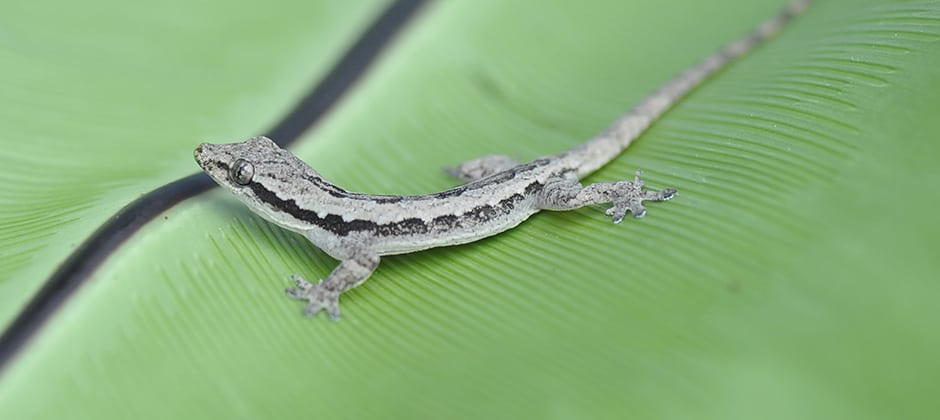Share this article
Watch: Geckos can climb, hang, and even glide
Using both live lizards and robot ones, researchers have found that geckos can glide, and their tail is important for the movement. In a study published in Communications Biology, researchers studied the Hemidactylus platyurus, a reptile that can jump many meters from tree to tree to avoid predators, in Singapore rainforests. They placed the geckos on a platform seven meters above the ground and recorded their jump and glide with high-speed cameras. The cameras showed that geckos with tails glided at a velocity of up to six meters per second and could stick a landing on the trunk of the tree. Geckos that had lost their tails, however, fell off right after landing. The tail appeared the help the geckos not only glide but stabilize on the landing. The team then went to the lab where they created a gecko robot with a removable tail. After measuring force on the front and back feet of the robot when it landed, they determined that the longer the tail, the lower the force pulled the back feet away from the surface. Less force helped the gecko stick its landing. “Nature has many unexpected, elegant solutions to engineering problems—and this is wonderfully illustrated by the way geckos can use their tails to turn a head-first collision into a successful perching maneuver,” said Robert Siddall, an author of the study.
Read the study in Communications Biology and watch a video of a lizard using its tail to help it stick its landing below.
Header Image:
Researchers found gecko tails are important in their ability to glide and stick their landings.
Credit: MPI for Intelligent Systems








